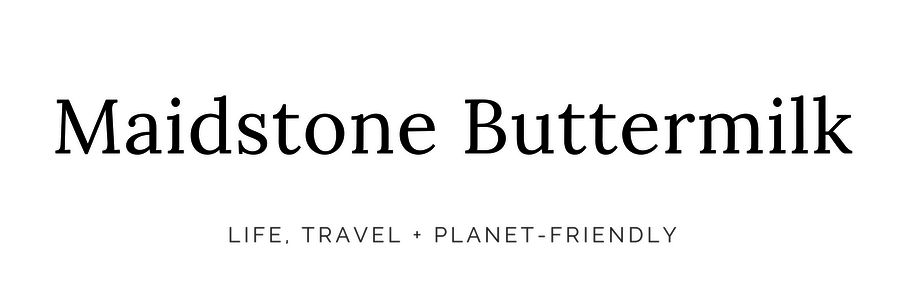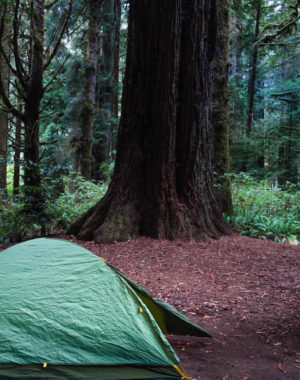If I were to ever have a love affair with a city it would be Santa Fe. It is an artistic center with a long and vivid history. The city has deep native American roots who had built its original villages. Born to Spanish colonists in Mexico, Don Juan de Oñate was the first to try to colonize Santa Fe in 1598. That is fifty years earlier than my hometown on the East Coast was even settled.
An assortment of wars and revolts between the native Pueblo people and French Creole fur traders from St. Louis, Spaniard colonialists, Mexican revolutionists and the Republic of Texas painted Santa Fe’s history until the United States gained New Mexico in 1848 and with it the oldest capital in the nation.

Entering New Mexico from Colorado, the Rockies flatten out into plains while red and yellow mountains jaggedly rise from the ground. In the distance, the white caps of the Sangre de Cristo Mountains shimmer proudly.
The Plaza
At the heart of Santa Fe is The Plaza, a 400-year-old town square. It houses the Palace of the Governors, the erstwhile seat of Spain’s government in the early 17th century. Today it’s a museum dedicated to Santa Fe’s storied past and in the square is now a host of native American craftsmen, silversmiths and jewelry-makers selling their work.

The entire Plaza is built from adobe as is, for the most part, Santa Fe. The sun-dried clay bricks together create a soft sienna hue which still seems to carry the shimmer of a sunset even when there are more clouds than clear skies. A true Spanish colonial town, it has an incredible charm and wonder in its unfamiliarity.
Just a block or so beyond the square is a small park and the Cathedral Basilica of St. Francis of Assisi of Santa Fe. It’s evocative of a church one might stumble into in Seville with elaborate porticos and patterns in the brick. Most surprising is the large statue in front depicting Kateri Tekakwitha, an Algonquian-Mohawk woman from New York who was the first recorded Native North American to be beatified. She was also canonized in 2012, nine years after the statue was built and installed by a local artist.
The Trading Posts

Sequoia Santa Fe – 201 Galisteo Street. While only on rare occasions do Andrew and I purchase something as enormous and impractical to transport as a dining table, had we been on the market (or in the budget) for the gorgeous coffee tables made by Sequoia, we would have packed a trailer. They’re beautiful smooth woodworks with jagged canyon like patterns filled with pebbles. It’s like looking at America’s West from above as a table.
Shiprock Santa Fe – 53 Old Santa Fe Trail, 2nd Floor. In a gorgeous upstairs, high ceilinged space, the Shiprock gallery houses some of the most beautiful vintage jewelry and Native American crafts and textiles that one can find.
Ortega’s on the Plaza – 101 West San Francisco Street. This place is an icon, located as named, right on the plaza. They certainly have one of the most diverse and quality collections in the city — an array of designs and gems, predominately turquoise.
Street Markets
Wander the streets for all kinds of goods and practice your negotiating skills along the way. I added a rug, a cow’s skull and a ristra* to our collection.
If it’s turquoise you’re after, the sellers lining The Plaza are vetted and so you need not beware of any counterfeit.

*A ristra is a strung arrangement of drying chile pepper pods. In Santa Fe, they seem to be at everyone’s front door. Whilst cooking just break a pod, and there’s your added spice. It’s so entwined with the local traditions that at Christmas time chile bulb lights are a common sight decorating homes and storefronts. Learn more about ristras here.
Come Come. Eat Eat.
The Shed – 113½ East Palace Avenue. This quirky and delicious spot has hanging plants galore and a warm atmosphere from its own kiva fireplace. In Santa Fe it’s all about chile (see above: ristra). Choose red, green, or order a taco Christmas-style. I also recommend their house-made St. Rita Margarita made with St. Germain.
5 and Dime – 58 East San Francisco Street. Right off the plaza, people come here for Frito Pie. For those who haven’t yet discovered this comfort food — it’s essentially chili with those corn chips from when you were a kid: Fritos. I had only found about it during a blizzard in New York a year prior.
Canyon Road
For more than 100 years, Canyon Road has been an art epicenter in Santa Fe, home to hundreds — hundreds! — of art galleries. It’s a long road of one-story adobe galleries, some with outdoor gardens and exhibitions welcoming passersby to examine art in all kinds of mediums — sculpture, oil on canvas, photography, wood carvings, even cowboy boots, items both Brobdingnagian and small.

The galleries which line Canyon Road are intently welcoming. The individuals inside seem genuinely excited that you’re there and they want to talk to you about the art, about its meaning. These gallery owners, managers, representatives are passionate about what they do and it didn’t matter if we were prospective clients or not, rather our curiosities were rewarded without ego or requisite expertise.
What’s Hot
The Longworth Gallery – 530 / 532 Canyon Road. The work of Michael Parkes is on display, a collection of incredible magical realist paintings that share a dream world.
“Fearless” by Michael Parkes
Pushkin Gallery – 550 Canyon Road. The Pushkin Gallery, which first opened in 2002, is dedicated to modern Russian masters and is the first Russian gallery in Santa Fe. It is an important and exquisite dedication to cross-cultural exchange.
Gaugy Gallery – 418 Canyon Road. The Gaugy Gallery is a wondrous place, not only for its trailblazing artists who are trying their hand, and beautifully at that, in new mediums and techniques. The building dates back to the early 19th century and has several rooms and unusually high ceilings for an adobe structure. Adding to its grandeur are five fireplaces, several courtyards, not to mention large windows, stone walls, and even a hidden compartment behind a painting which holds a colossal safe.
“Waters of the Soul” by Kathy Hirshon
The genial and scholarly gallery owner is quick to share the gallery’s history, the works of the artists like Kimo Minton’s carved wood paintings and wood-burned charred narratives of Kathy Hirshon — a painstaking process of pointillism with a burning tool, or answer any other curiosities you might have.
El Museo
The El Museo flea market is a fabulous collective space of artisans, vendors and craftsmen with their own handmade jewelry from materials such as copper, turquoise or leather; there are vintage goods, soap and candle makers, photographers, painters, antique prints and so on.
The flea market itself takes place at the Santa Fe Railyard in two converted warehouse spaces.
The lot also includes an exhibition hall at the El Museo Cultural de Santa Fe, where a photography exhibit of Lisa Law’s work from the 1960s — Flashing On The Sixties: A Trip Back to the Garden — was on display.

New Mexico truly is the Land of Enchantment.
If you enjoy this guide to Santa Fe, you can take it with you. Using the GPSmyCity app guides can be downloaded to your phone for offline use.
Download it here.





